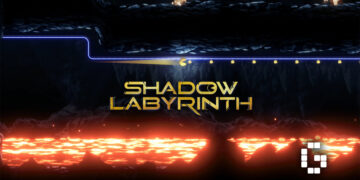Deep in the irradiated heart of the Chernobyl Exclusion Zone, a legend is about to be reborn. After fifteen years of silence, the highly anticipated S.T.A.L.K.E.R. 2: Heart of Chornobyl stands ready to draw players back into its haunting wasteland. This return has garnered massive attention from the gaming community, with the title currently ranking as the fourth most wishlisted game on Steam – a testament to the enduring appeal of this unique franchise and the hunger for its return.
The franchise, which began with S.T.A.L.K.E.R.: Shadow of Chernobyl in 2007, carved out its own unique niche in gaming history. Its distinctive blend of survival horror, first-person shooting, and unforgiving gameplay mechanics set it apart from conventional shooters of its time. Through subsequent titles like Clear Sky and Call of Pripyat, the series built a devoted following that has remained passionate despite the long wait. Now, its successor promises to expand upon these foundations while maintaining the series’ hardcore identity that made it a cult classic.
Uncompromising Combat
At its heart, S.T.A.L.K.E.R. 2 upholds the series’ foundation of ruthless survival horror. Players face a constant struggle with resource scarcity, particularly in the early game where ammunition and medical supplies are precious commodities. Even basic survival necessities come at a steep price, forcing players to make tough decisions about resource allocation.

Success demands tactical thinking, as each encounter requires careful weapon selection. Underground caves teeming with aggressive mutants call for powerful shotguns to handle close-quarter combat with resilient enemies, while other situations demand different loadouts. This calculated approach to combat reinforces the game’s commitment to strategic gameplay rather than run-and-gun action. The game’s realistic physics and ballistics system further enhances this tactical depth, with features like authentic recoil patterns and bullet drop demanding precision and skill from players.

Survival Systems at Work
The game deepens its survival mechanics through a demanding inventory management system. Players must carefully consider their equipment choices within a grid-based inventory where item placement matters and weight directly affects movement and stamina. The inability to rotate items adds another layer of spatial puzzle-solving to inventory management.

Adding another layer of complexity, the Zone’s mysterious artifacts offer both benefits and drawbacks through a five-slot system. Players must weigh these powerful but double-edged tools carefully, as each choice impacts their survival strategy. As players progress, unlocking all five artifact slots opens up new strategic possibilities, but also requires careful consideration of the trade-offs between power and vulnerability that each artifact brings.
A Living, Breathing Zone
The Chernobyl Exclusion Zone itself emerges as a formidable character, featuring diverse environments from desolate villages to radioactive wastelands. Each area presents its own unique ecological threats and atmospheric challenges, creating distinct gameplay experiences across the map. Dynamic weather systems, including fierce storms and electromagnetic anomalies, transform these landscapes moment by moment.

These environmental hazards do more than create atmosphere – they actively affect visibility and gameplay, forcing players to adapt their strategies to the Zone’s ever-changing conditions. The game’s distinctive soundscape enhances this immersion, with haunting ambient audio that brings the Zone’s eerie atmosphere to life.

Threats on All Sides
Survival in the Zone means facing a diverse array of enemies. Mutated creatures stalk the wasteland, each with unique behaviors and attack patterns that demand different tactical approaches. From aggressive close-range attackers to more cunning predators, each encounter presents its own challenge. Human factions add another layer of danger, creating a complex web of potential allies and enemies throughout the Zone.

These human opponents bring their own combat styles and equipment, requiring players to constantly adapt their tactics. The interplay between mutant and human threats creates dynamic combat scenarios where players must stay alert and ready to switch strategies at a moment’s notice.

Faction Politics and Customization
Player choices shape their experience through a dynamic faction system where relationships evolve based on actions and decisions, potentially leading to different story outcomes. Each faction brings its own goals and values to the Zone, creating a complex political landscape that players must navigate.

Supporting this freedom of approach, a comprehensive weapon customization system allows players to modify their equipment through in-game craftsmen, adapting their arsenal to match their preferred combat style. From improving accuracy to enhancing firepower and handling, these modifications offer extensive options for personalizing the combat experience.
Looking Ahead
S.T.A.L.K.E.R. 2: Heart of Chornobyl is scheduled for release on November 21st for PC and Xbox Series X|S. For longtime fans and newcomers alike, the wait for this ambitious sequel is nearly over. With its promise to deliver the series’ trademark blend of atmospheric horror, strategic gameplay, and uncompromising challenge, S.T.A.L.K.E.R. 2 appears ready to reclaim its place among gaming’s most distinctive and demanding experiences. The Zone awaits, more dangerous and compelling than ever.









![[GUIDE] Persona 5: The Phantom X Codes & How To Redeem Them](https://cdn.gamerbraves.com/2025/07/P5X-Codes_Guide_FI-360x180.jpg)



![[ASIA EXCLUSIVE] Bringing Back a Classic: Inside the Making of FINAL FANTASY TACTICS – The Ivalice Chronicles](https://cdn.gamerbraves.com/2025/06/FFT-Ivalice-Chronicles_Interview_FI2-360x180.jpg)


![[EXCLUSIVE] Gearbox Executives Share Details on Borderlands 4 – Story, Weapons, and Lessons Learned](https://cdn.gamerbraves.com/2025/06/Borderlands-4_Interview_FI-360x180.jpg)
![[EXCLUSIVE] Wan Hazmer Reveals How No Straight Roads 2 Expands Beyond Vinyl City with Shueisha Games](https://cdn.gamerbraves.com/2025/06/NSR2_Interview_FI-360x180.jpg)










